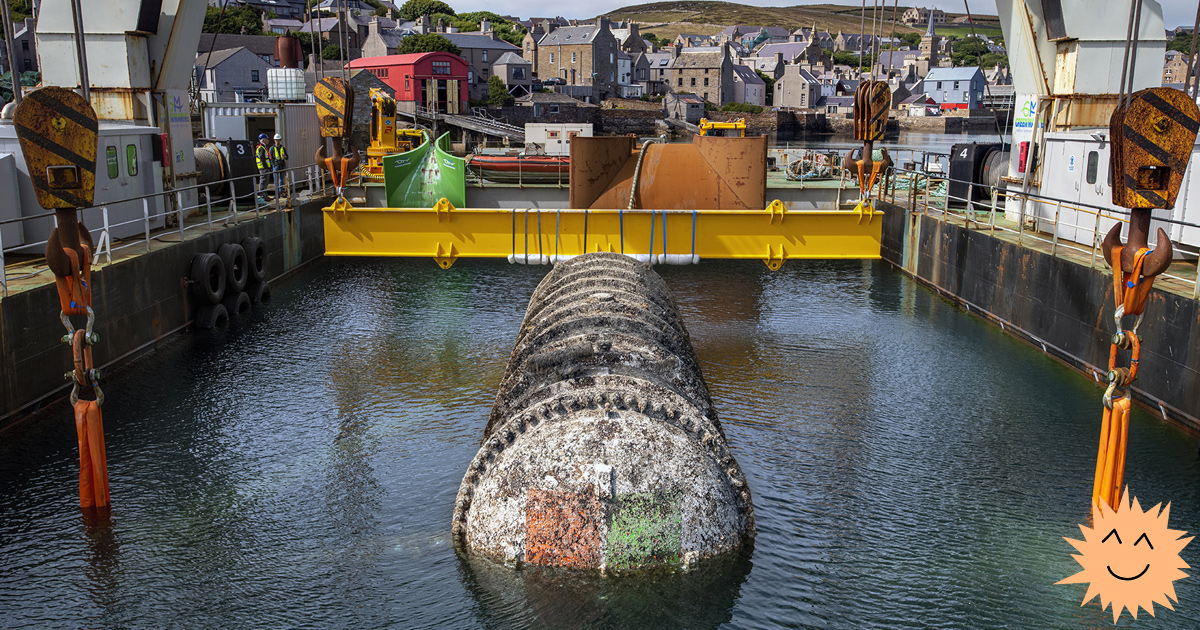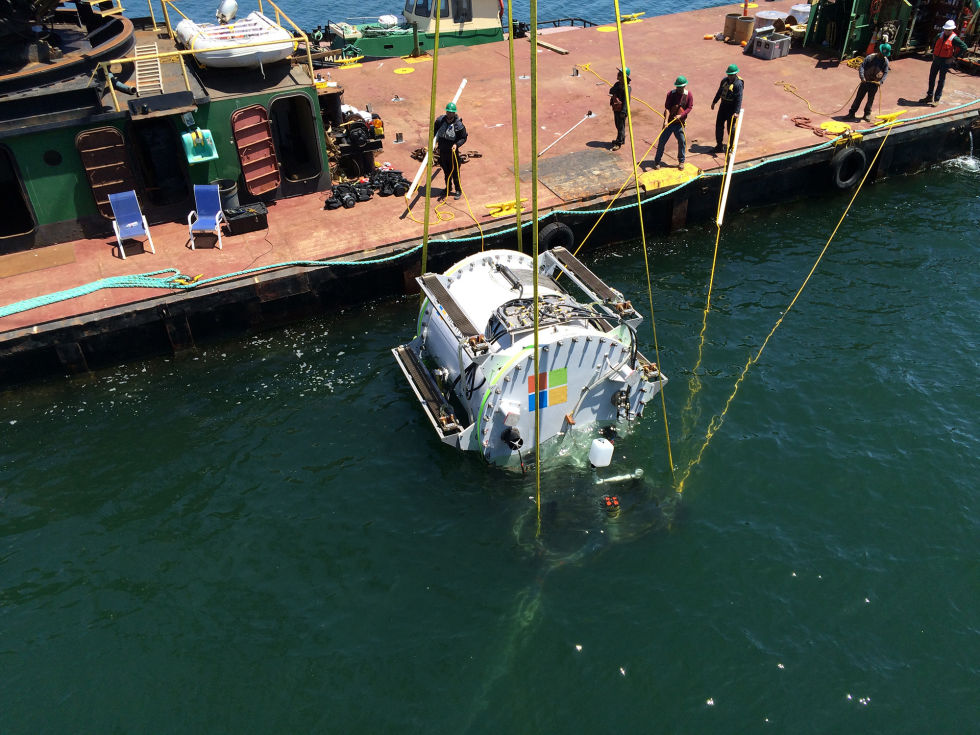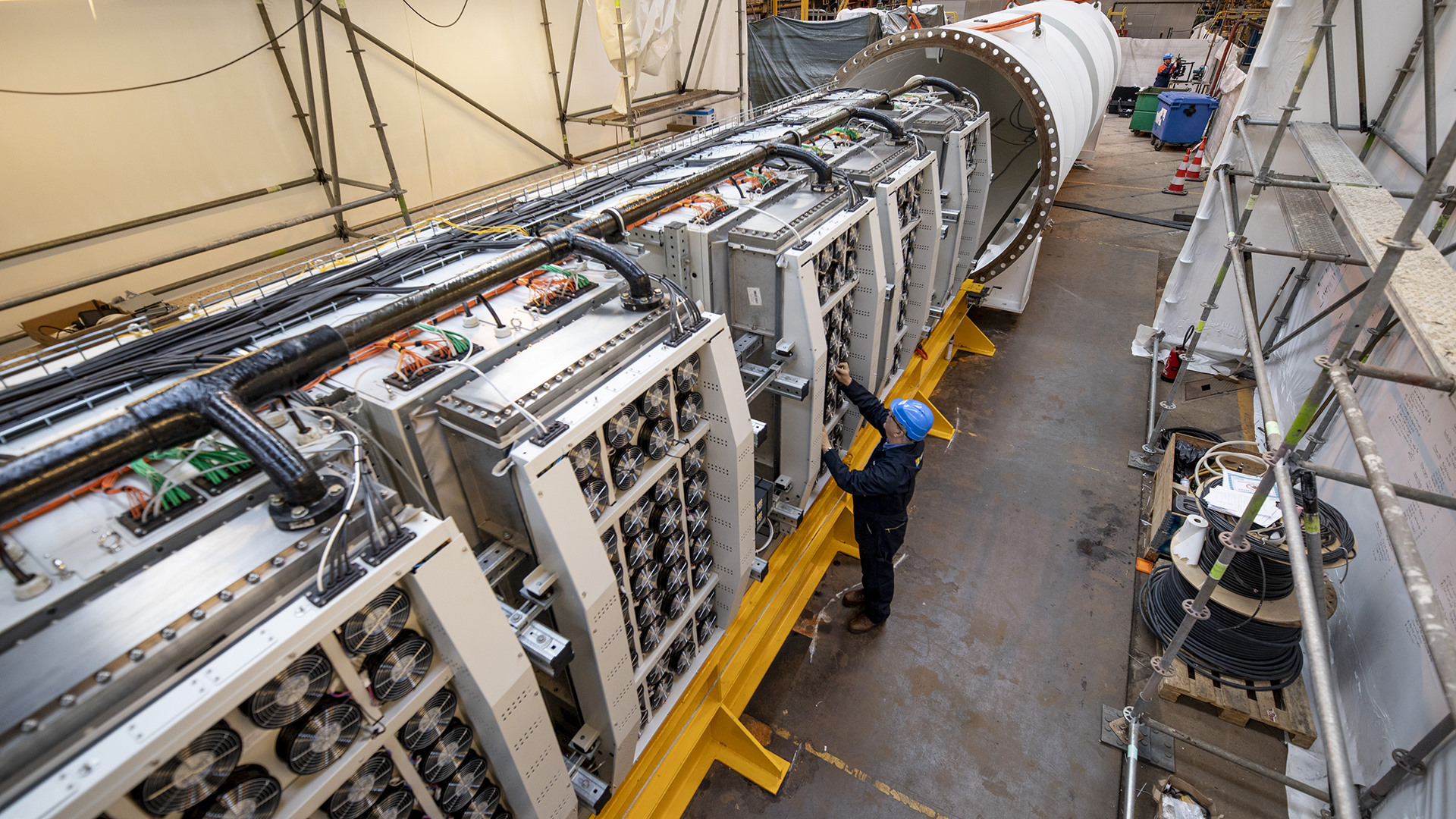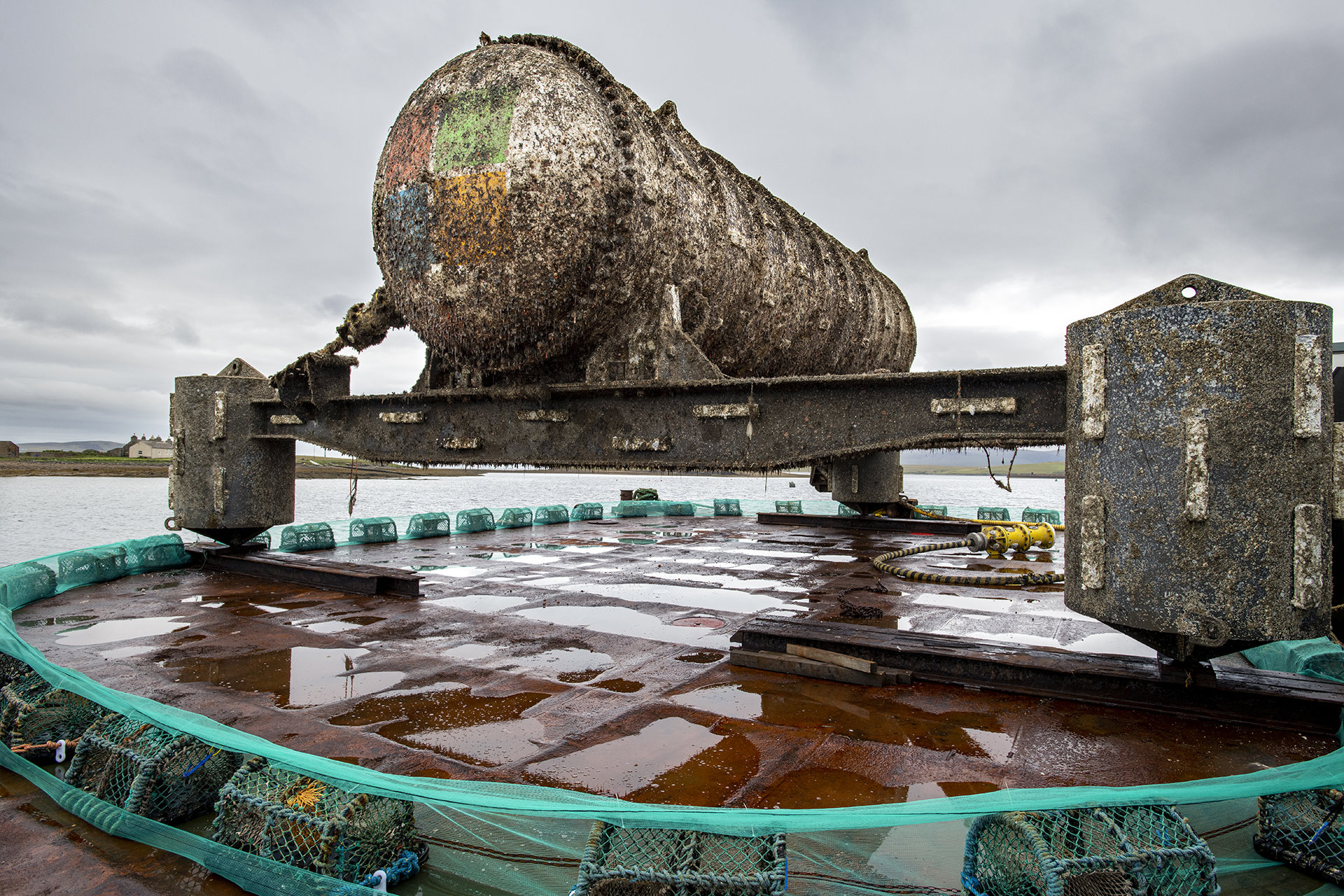
The goal of the experiment was extremely simple: is it possible to create a completely autonomous hardware cluster, and if so, how long and in what conditions it can be operated.
Microsoft Project Natick is a multi-year study examining how to manufacture and operate environmentally sustainable prefabricated data centers in a standardized format and size that can be quickly deployed and left with lights off on the seabed for years.
- Official blog of the project
Two years later, the project team lifted a container with a data center from the bottom of the Orkney Islands and reported the results: the experiment was more than successful.
The Natick project started back in 2015. Then a team of Microsoft engineers developed the concept of a data center in a flooded container and tested the first prototype, called "Leona Philpot".

"Leona Philpot" - a trial data center in a Microsoft development container, August 2015
It was at "Leona Philpot" that Microsoft engineers tested the cooling system for equipment using the natural environment - sea water. The tests were carried out in the Pacific Ocean, 1 kilometer off the coast of the United States. Specific locations are not mentioned, but judging by the landscapes in the photographs, the engineers did not climb too far north then: it is likely that the first tests were carried out near the coast of California.
The very idea of an eco-friendly mobile underwater data center is not just a reference towards green technologies, but also more than a practical solution. According to the developers, half of the world's population lives in the ~ 200 km coastal zone. This makes the placement of data centers under water an attractive solution, because a lot of questions about construction, rent, communications on foreign territory and so on are removed. In addition, using seawater as a coolant for the cooling system is also much better than building the same systems in a conventional data center, and certainly cheaper.

Assembling the Leona Philpot onshore before diving
Plus, this is almost a twofold energy saving: almost as much power is spent on cooling in a classic data center as on the operation of the equipment itself, this is thermodynamics. Therefore, a flooded data center looks attractive from this point of view.
Tests lasted from August to October 2015, took 105 days and showed that, in general, the concept is viable and can be developed: it takes three months to assemble and install a container data center versus a year to build a data center queue, deployment does not cause any particular difficulties , since humanity has been using submersible devices for a long time, and it is possible to manage the data center remotely with rare inspections of the external state of the case. The data center itself in a container is a typical solution and can be sold pre-assembled.
In 2018, the experiment was repeated. This time, the engineers assembled a configuration close to a commercial one: the number of servers inside the container increased, and the container itself became more like a railroad tank than a barrel. To be precise, this is the tank. The hull was based on a modified ISO standard shipping container, which is actively used throughout the world in cargo transportation. This decision removed the issue not only of the production of data center cases, but also of its transportation by standard logistics to the dive site. The planned resource of uninterrupted operation of the final product is five years under water . The prototype was named "Northern Isles" - "Northern Islands".

Key Natick Project Developers, from left to right: Mike Shepperd, Senior R&D Engineer, Sam Ogden, Senior Software Engineer, Spencer Fowers, Senior Technical Officer, Eric Peterson, Researcher and Ben Cutler, Project Manager
The data center is now flooded in cold waters of Scotland, near the Orkney Islands. The container was lowered to the seabed, to a depth of 35 meters, and it was connected to the "ground" by power and fiber-optic cables.
As part of the second phase of Natick's experiments, the researchers wanted to see if they were economically viable to develop. There were many questions: how the equipment will behave at great depths, whether there will be a problem with power supply and data transmission, since the server lies in an active coastal zone and the same submarine Internet cables have problems with marine life and anchors of fishing vessels. And finally, how much equipment will fail without constant physical monitoring and maintenance.
The engineers, realizing that the latter - the failure of equipment inside the container - is the greatest threat to the commercial use of their design, made an elegant decision. An oxygen-free environment is organized inside the sealed container. Instead of regular air, cheap and safe nitrogen was injected into the Northern Isles cavity and the humidity was reduced to zero.

This technical solution removed several questions at once. First of all, the absence of oxygen excluded a fire inside the container during operation. Melting of individual elements was still possible, but open fire that could be transferred to other equipment and destroy the entire data center was not. In addition, nitrogen as a medium is less aggressive, which reduces the stress on metal elements of computer technology, which can be subject to corrosion.

Photo of a mega-rack with 12 server racks loaded into a container, for a total of 864 servers, 2018
In this configuration, the Northern Isles was flooded off the Scottish coast and spent two years under water.

Data center after two years on the seabed
And now, yesterday, September 14, Microsoftreported on the results of her experiment after the rise of the data center.
First and foremost, during the operation, 8 times fewer servers failed than in a similar configuration in a data center on the surface of the earth. The exact numbers, unfortunately, are not indicated, but it is obvious that they are not too large. Researchers explain this excellent result by two things: a nitrogen environment that is non-aggressive for equipment, plus the elimination of the human factor in the person of employees idly staggering past the servers. The latter is literally an illustration of the well-known rule "works - don't touch".
Researchers have collected all non-working equipment, including faulty cables, and subjected it to a thorough analysis to understand the reasons for the breakdown.

The container itself was hardly damaged by being on the seabed. As you can see in the photo above, after cleaning with a water cutter, no serious damage or corrosion is observed on its surface, although the marine environment is extremely corrosive to metals.

Two years ago, colleagues from Azure got very interested in the development of the Natick project team. As their director admitted, the ability to deploy mobile and autonomous data centers that do not require human intervention is a "dream". Such a solution will definitely be in demand in Southeast Asia, Africa, and a number of European regions.
In addition, Microsoft's development can spur the development of "green" energy, that is, cause a cascade effect. While engineers have to drag power along with fiber optic cable from land, but with the development of autonomous tidal power plants, the Natick project data centers can be powered from them. This not only fits into the concept of a "green DC", but also significantly increases the autonomy of the data center, making it in terms of power almost independent of what is happening on the shore.
Advertising
Virtual servers with protection against DDoS attacks and the latest hardware, servers are located in one of the best Russian data centers - DataPro. All this is about our epic servers . Maximum configuration - 128 CPU cores, 512 GB RAM, 4000 GB NVMe! Hurry up to order.
